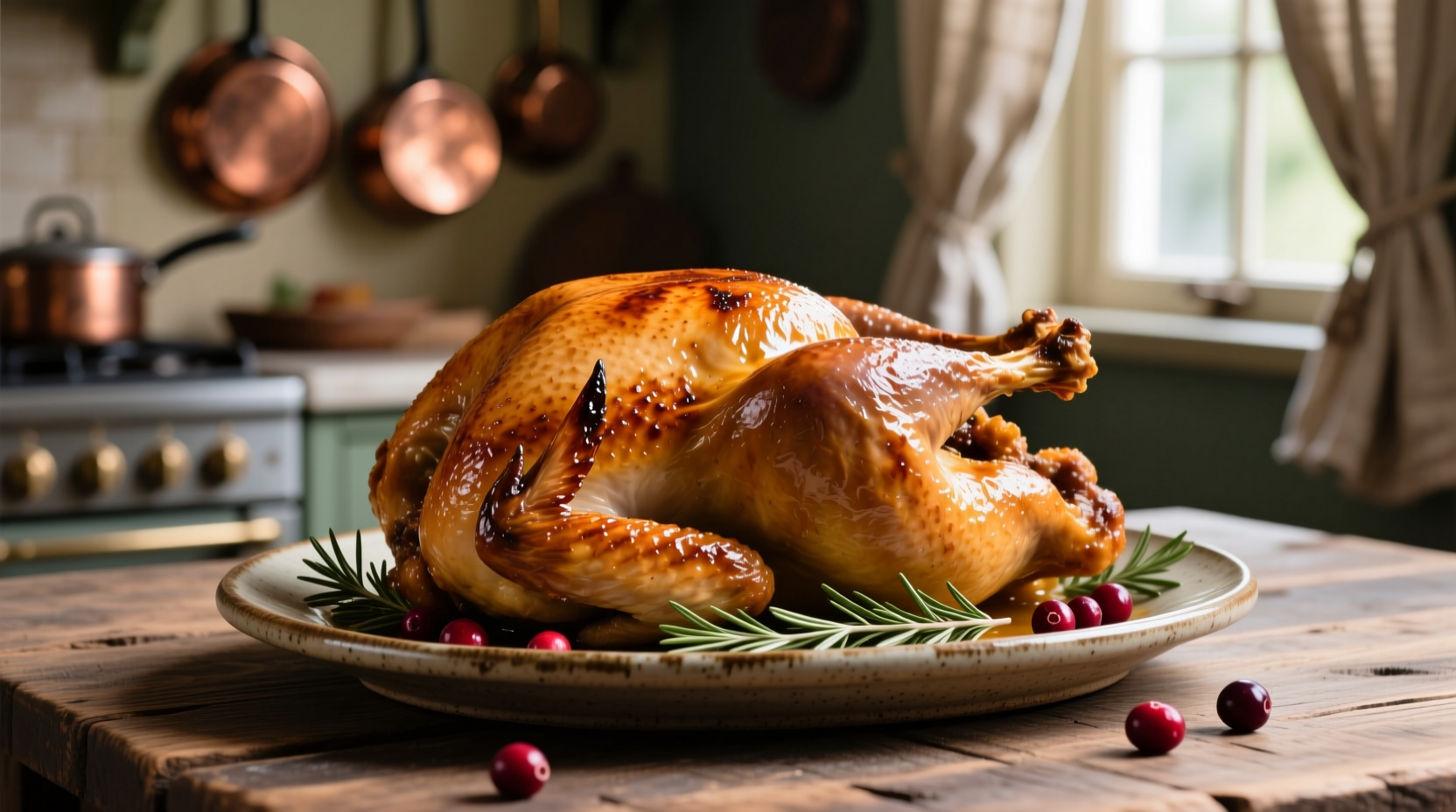For a perfectly cooked turkey, roast an unstuffed bird at 325°F for approximately 13 minutes per pound, reaching a safe internal temperature of 165°F in the thickest part of the breast and thigh. A 12-14 pound turkey typically requires 3 to 3¾ hours. Always verify doneness with a food thermometer for food safety.
Nothing says holiday celebration quite like a beautifully roasted turkey, but getting the cooking time right can make or break your meal. Whether you're hosting your first Thanksgiving or refining your technique after years of experience, understanding the precise timing and temperature requirements ensures moist, flavorful meat that's safe to eat. Let's break down exactly how long to cook your turkey for perfect results every time.
Why Proper Turkey Cooking Time Matters
Undercooked turkey poses serious food safety risks, while overcooked turkey becomes dry and disappointing. The USDA Food Safety and Inspection Service emphasizes that poultry must reach 165°F internal temperature to eliminate harmful bacteria like salmonella and campylobacter. But achieving that perfect temperature throughout requires understanding how oven temperature, turkey size, and preparation method affect total cooking time.
Turkey Preparation Essentials
Before your turkey even enters the oven, proper preparation sets the stage for accurate cooking times:
- Complete thawing - A frozen turkey adds 25-50% to cooking time. Allow 24 hours of refrigerator thawing per 4-5 pounds
- Dry the skin - Pat thoroughly with paper towels for optimal browning
- Room temperature start - Let the turkey sit out for 1 hour before roasting for more even cooking
- Trussing decision - Tied legs cook more evenly but may extend total time slightly

Complete Turkey Cooking Time Guide
The following chart provides precise cooking times based on USDA guidelines and professional kitchen testing. These times assume an unstuffed turkey roasted at 325°F in a conventional oven.
| Turkey Weight | Unstuffed Cooking Time | Stuffed Cooking Time | Resting Time |
|---|---|---|---|
| 8-10 lbs | 2½-3 hours | 3-3½ hours | 20 minutes |
| 10-14 lbs | 3-3¾ hours | 3¾-4¼ hours | 25 minutes |
| 14-18 lbs | 3¾-4¼ hours | 4¼-4½ hours | 30 minutes |
| 18-20 lbs | 4¼-4½ hours | 4½-5 hours | 35 minutes |
| 20-24 lbs | 4½-5 hours | 5-5½ hours | 40 minutes |
Critical Food Safety Timeline
Understanding the food safety timeline helps prevent dangerous temperature zones. According to the FDA Food Code, poultry should not remain between 40°F and 140°F for more than 2 hours. The chart below shows the critical temperature progression:
- 140°F - The "danger zone" ends; bacteria growth slows significantly
- 150°F - Collagen begins breaking down, tenderizing the meat
- 160°F - Breast meat reaches safe temperature but may be slightly dry
- 165°F - USDA minimum safe temperature for all poultry
- 170-175°F - Thigh meat optimal tenderness range
Checking for Perfect Doneness
Time alone isn't enough - always verify with a thermometer:
- Insert thermometer into thickest part of breast, avoiding bone
- Check innermost part of thigh and wing joint
- Confirm 165°F in all areas (170-175°F for dark meat preferred by many chefs)
- Check stuffing separately if used (must reach 165°F)
Visual cues complement thermometer readings: clear juices (not pink), legs move easily in sockets, and skin is deep golden brown.
Resting: The Secret to Juicy Turkey
Resist the urge to carve immediately! Resting allows juices to redistribute throughout the meat. For optimal results:
- Cover loosely with foil to retain heat
- Rest 20-40 minutes depending on size (see cooking time chart)
- Temperature will rise 5-10°F during resting (carryover cooking)
- Carve against the grain for maximum tenderness
Troubleshooting Common Cooking Issues
Browning too quickly? Reduce oven temperature by 25°F or tent breast with foil.
Cooking too slowly? Verify oven temperature with independent thermometer; older ovens often run cool.
Dry breast meat? Consider spatchcocking (removing backbone) for more even cooking.
Uneven cooking? Rotate pan halfway through cooking time for consistent heat exposure.
Special Considerations for Different Cooking Methods
Convection ovens: Reduce temperature by 25°F and check 25% earlier than standard times.
Grill roasting: Use indirect heat at 325°F; expect slightly longer cooking times due to temperature fluctuations.
Smoking: At 225-250°F, plan for 30-45 minutes per pound with extended resting time.
Leftover Safety and Storage
Proper handling of leftovers prevents foodborne illness. The USDA recommends:
- Refrigerate within 2 hours of cooking
- Store in shallow containers for rapid cooling
- Consume within 3-4 days or freeze for longer storage
- Reheat to 165°F internal temperature
Professional Chef's Timing Tips
After years working in professional kitchens, I've found these timing strategies consistently deliver perfect results:
- Start checking temperature 45 minutes before expected finish time
- Use an oven thermometer for accurate ambient temperature
- Place turkey on a rack above liquid (stock or water) for moisture control
- Calculate cooking time based on actual weight, not package weight











 浙公网安备
33010002000092号
浙公网安备
33010002000092号 浙B2-20120091-4
浙B2-20120091-4